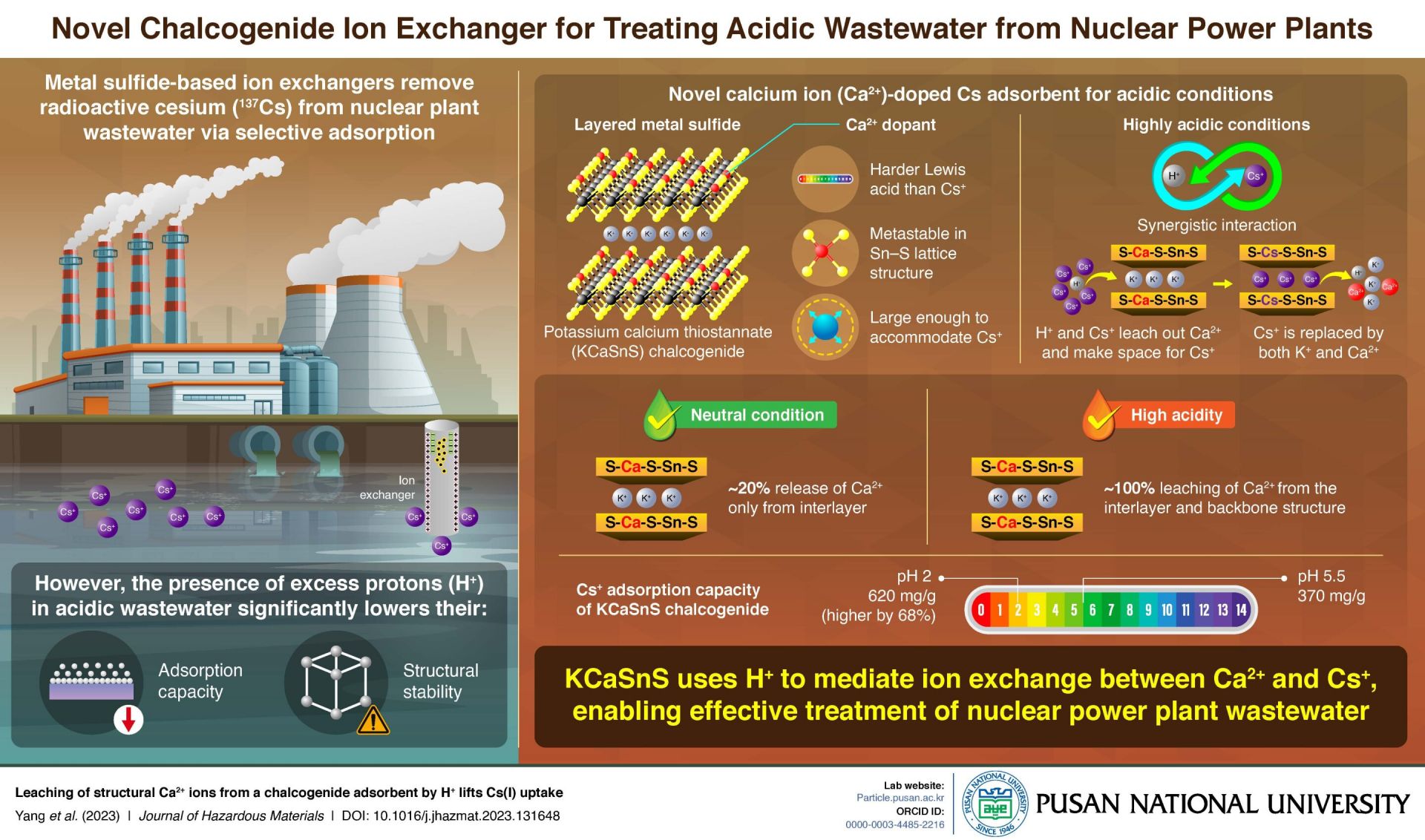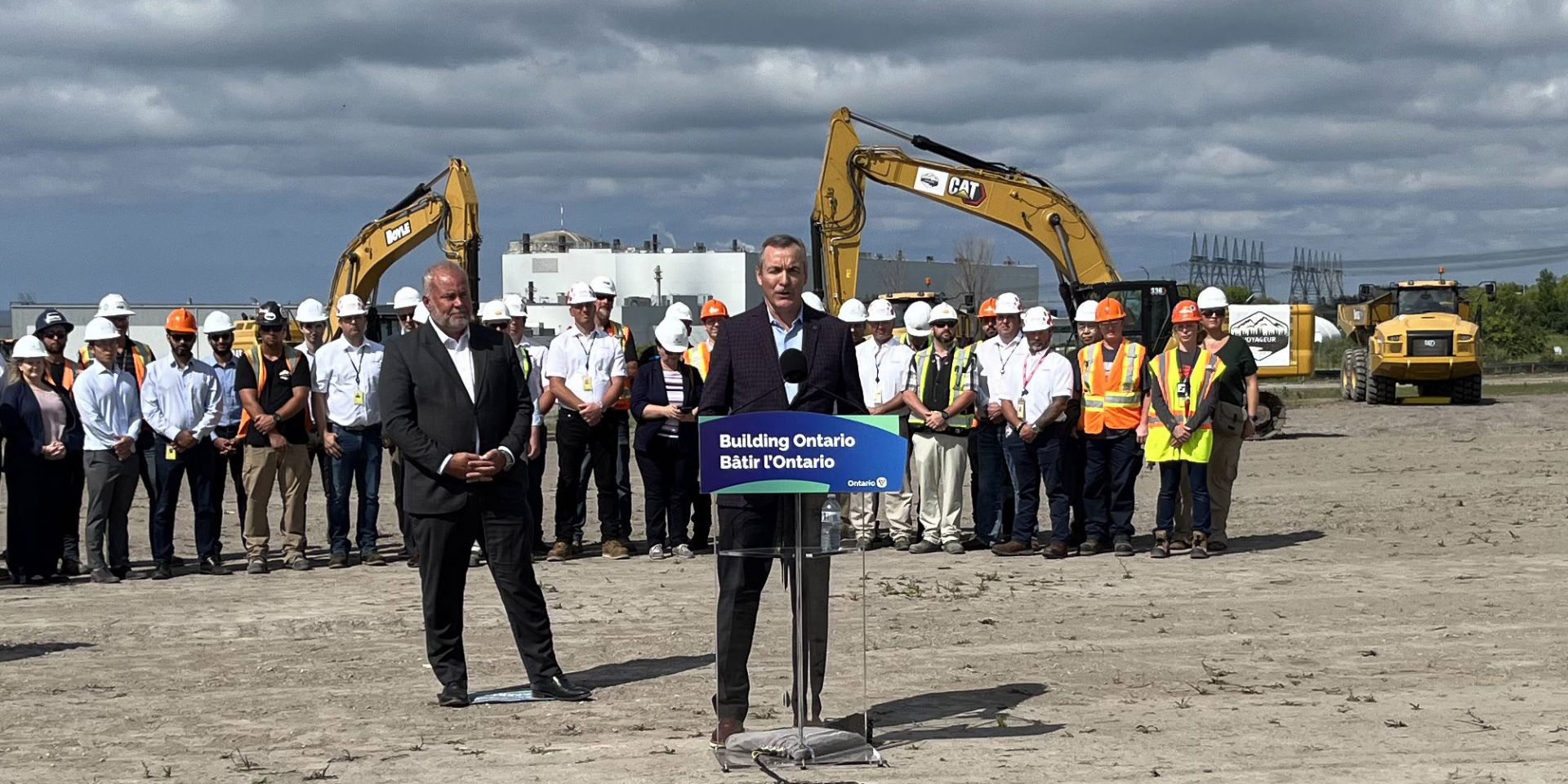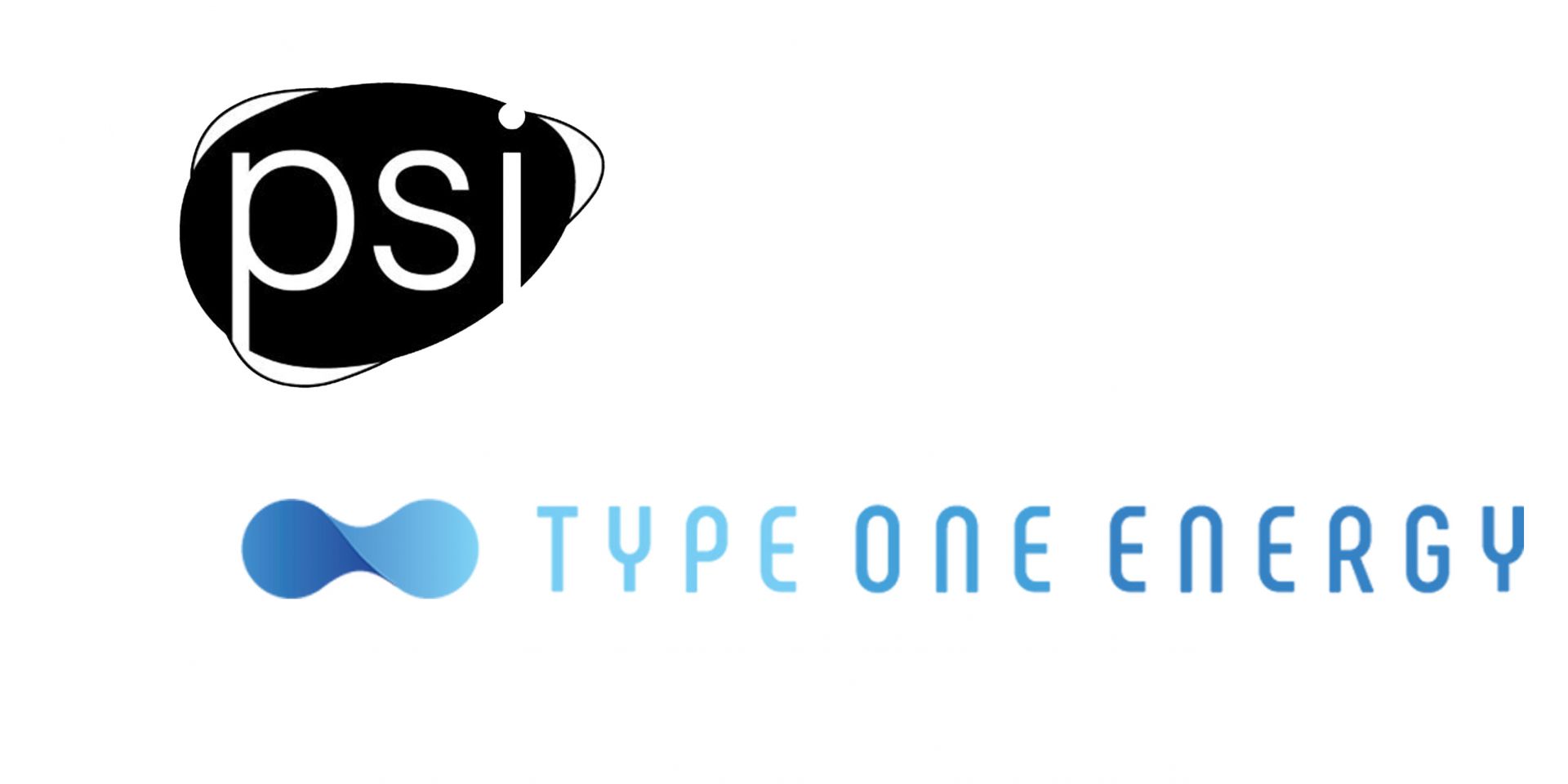(Image: Kuk Cho/Pusan National University)
Researchers from the Pusan National University in South Korea have developed a new calcium-doped ion exchanger for the removal of radioactive cesium from acidic nuclear power plant wastewater. The findings have the potential for developing more efficient and effective methods of remediating radioactive contamination.
A bank of Urenco centrifuges. (Photo: Urenco USA)
Urenco announced July 6 that it will expand enrichment capacity at its U.S. site in Eunice, N.M.—known as UUSA—by adding new centrifuge cascades to increase capacity by about 700 metric tons of separative work units per year, or a 15 percent increase, with the first new cascades coming on line in 2025.
Ontario energy minister Todd Smith (left) and Ontario Power Generation president and CEO Ken Hartwick announce plans for three more BWRX-300 units at Darlington. (Photo: OPG)
If we’re in a new nuclear renaissance, its capital would appear to be Ontario. On July 7, just two days after debuting a collaboration with Bruce Power to build up to 4.8 GW of new nuclear generation at the Bruce plant, the government of Ontario announced that it is working with Ontario Power Generation to begin planning and licensing for the deployment of three additional GE Hitachi Nuclear Energy (GEH) BWRX-300 small modular reactors at that utility’s Darlington site.
Chubu Electric Power Co.'s Hamaoka nuclear power plant. (Photo: Chubu Electric)
“It is critical after the Hamaoka Nuclear Power Station restart that we reduce our cost and increase our capacity factor while becoming more economically competitive.” Ichiro Ihara, chief nuclear officer of Chubu Electric Power, made this observation recently when the Electric Power Research Institute visited the Japanese nuclear power plant for a strategy development session for plant modernization. EPRI’s team of five specialists spent four days at Hamaoka to investigate the feasibility of potential improvements—the third step of the EPRI modernization strategy planning process. It was a trip six months in the making—and the first time EPRI has applied its nuclear plant modernization process outside the United States.
While speaking at Bruce Power, Ontario minister of energy Todd Smith announces his government’s support for planning and consultation to explore nuclear expansion. (Photo: Bruce Power)
The government of Ontario announced Wednesday that it is starting predevelopment work with Bruce Power—operator of the eight-unit Bruce nuclear plant—to site the first large-scale nuclear build in Canada in more than thirty years.
Conceptual art of an eVinci microreactor site. (Image: Westinghouse)
Westinghouse Electric Company has submitted to the Canadian Nuclear Safety Commission the first set of vendor design review (VDR) documents for its eVinci microreactor, the Pennsylvania-based nuclear technology firm announced yesterday. In September 2021, Westinghouse signed a service agreement with the CNSC that initiated the VDR.
A map of Norway (green) and Finland (blue). (Image: Wikimedia Commons)
Consulting company TVO Nuclear Services (TVONS), a subsidiary of Teollisuuden Voima Oyj, owner and operator of Finland’s three-unit Olkiluoto nuclear plant, has signed a memorandum of understanding with Norsk Kjernekraft, aka Norwegian Nuclear, a firm established last July with the goal of bringing small modular reactors to power reactor–deprived Norway.
A June 27 announcement from TVO said the new MOU provides the Norwegian firm with “access to the know-how and experience of one of the world’s best-known nuclear power companies” and stressed TVO’s 60 percent ownership of Posiva, the company responsible for the disposal of Finland’s spent nuclear fuel. “Posiva has successfully built the world’s first final disposal facility for high-level nuclear waste,” TVO stated. “This is decisively important for Norwegian Nuclear’s plans for the management of the entire life cycle of nuclear power.”
From left, Sophie Lemaire, Westinghouse senior vice president, EMEA & Asia PWR fuel; David Eaves, Westinghouse EHS&Q director and chief technical officer; Mark Hartley, EDF Energy managing director of generation; and David Tomblin, EDF Energy finance director of generation. (Photo: Westinghouse)
Westinghouse Electric Company has signed a contract extension with EDF Energy to supply fuel for the United Kingdom’s advanced gas-cooled reactor (AGR) fleet, the American firm announced yesterday.
Pictured, from left, are Steve Nesbit, Christina Leggett, John Kessler, Paul Dickman, John Mattingly, and Craig Hansen. Edwin Lyman, who joined the panel remotely, is not pictured.
Advanced reactors may be key to a clean energy future, but to prove it they’re going to need fuel—and that fuel will be derived from limited uranium resources and managed throughout the nuclear fuel cycle, whether that cycle is open (like the current fuel cycle) or closed (with reprocessing). Six panelists convened on June 12 during the Annual Meeting of the American Nuclear Society for the executive session “Merits and Viability of Advanced Nuclear Fuel Cycles: A Discussion with the National Academies.” They discussed those fuel cycles and the findings of a National Academies of Science, Engineering, and Medicine (NASEM) consensus committee released as a draft report in November 2022 and published earlier this year.
















